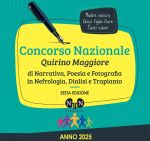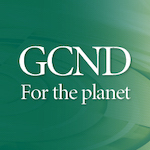Habits in the time of Coronavirus
DOI:
https://doi.org/10.33393/gcnd.2020.2131Keywords:
Covid-19, Exercise, Healthy habits, Nutrition, Psychology, Sedentary lifestyle, Social distancingAbstract
Introduction: The COVID-19 pandemic that hit the humankind in December 2019, is steering quick and drastic changes to our habits. The goal of our research is the analysis of the emotional, healthy and physiological effects of this radical routine disruption, in a sample of 3000 Italian people.
Methods: We made use of a 5-days flash survey in an anonymous way, available from April the 5th until April the 10th.
Results: As expected, results show a healthy decrease, after just one month of lockdown, at several stages: emotional, relational, nutritional and physical.
Conclusions: This quarantine period can be considered as an extreme example of immediate sedentary and isolation effects on people. Home habits such as basic physical activity, circadian rhythm routine, proper diet, and correct information consumption can be useful to increase our resilience in difficult times like the current one, but also in our next future.
References
- WHO. Global health risks. Mortality and burden of disease attributable to selected major risks. 2009. http://www.who.int/healthinfo/global_burden_disease/GlobalHealthRisks_report_full.pdf (accessed Jan 15, 2012).
- Ekelund U, Steene-Johannessen J, Brown WJ, et al. Does physical activity attenuate, or even eliminate, the detrimental association of sitting time with mortality? A harmonised meta-analysis of data from more than 1 million men and women. Lancet. 2016;388(10051):1302-10.
- Scarborough P, Bhatnagar P, Wickramasinghe KK, Allender S, Foster C, Rayner M. The economic burden of ill health due to diet, physical inactivity, smoking, alcohol and obesity in the UK: an update to 2006-07 NHS costs. J Public Health (Oxf). 2011;33:527-35.
- Russell G, Lightman S. The human stress response. Nat Rev Endocrinol. 2019;15:525-34.
- Capitanini A, Mariani D. Born to run… ma anche per camminare. Attività motoria, il primo pilastro dell’evoluzione umana. Giornale di Tecniche Nefrologiche e Dialitiche. 2019;31(2):142-5.
- Mozaffarian RS, Lee RM, Kennedy MA, Ludwig DS, Mozaffarian D, Gortmaker SL. Identifying whole grain foods: a comparison of different approaches for selecting more healthful whole grain products. Public Health Nutr. 2013;16:2255-64.
- Cario E. Bacterial interactions with cells of the intestinal mucosa: Toll-like receptors and NOD2. Gut. 2005;54:1182-93. doi: 10.1136/gut.2004.062794.
- Ramberg JE, Nelson ED, Sinnott RA. Immunomodulatory dietary polysaccharides: A systematic review of the literature. Nutr J. 2010;9:54.
- Hosseinpour-Niazi S, Mirmiran P, Sohrab G, et al. Inverse association between fruit, legume, and cereal fiber and the risk of metabolic syndrome: Tehran Lipid and Glucose Study. Diabetes Res Clin Pract. 2011;94:276-83.
- Ludwig DS, Majzoub JA, Al-Zahrani A, Dallal GE, Blanco I, Roberts SB. High glicemic index foods, overeating, and obesity. Pediatrics. 1999;103:E26.
- López-Gómez JJ, Izaola-Jauregui O, Primo-Martín D, et al. Effect of Two Meal Replacement strategies on Cardiovascular Risk Parameters in Advanced Age Patients with Obesity and Osteoarthritis. Nutrients. 2020;12:976.
- Sinha R, Cross AJ, Graubard BI, Leitzmann MF, Schatzkin A. Meat intake and mortality: A prospective study of over half a million people. Arch Intern Med. 2009;169(6):562-71.
- Larsson SC, Orsini N. Red meat and processed meat consumption and all-cause mortality: a meta-analysis. Am J Epidemiol. 2014;179(3):282-9.
- Rui-Hai L. Health-promoting components of fruits and vegetables in the diet. Adv Nutr. 2013;4(3):384S-392S.
- Martinez-Gonzalez MA, Salas-Salvado J, Estruch R, et al. Benefits of the Mediterranean diet: insights from the PREDIMED Study. Prog Cardiovasc Dis. 2015;58:50-60.
- Jayalath VH, de Souza RJ, Sievenpiper JL, et al. Effect of dietary pulses on blood pressure: a systematic review and meta-analysis of controlled feeding trials. Am J Hypertens. 2014;27:56-64.
- von Ruesten A, Weikert C, Fietze I, Boeing H. Association of sleep duration with chronic diseases in the European Prospective Investigation into Cancer and Nutrition (EPIC)-Potsdam study. PLoS One. 2012;7:e30972.
- Ross JG, Myers SM. The Current Use of Social Media in Undergraduate Nursing Education: A Review of the Literature. Comput Inform Nurs. 2017;35(7):338-44.












